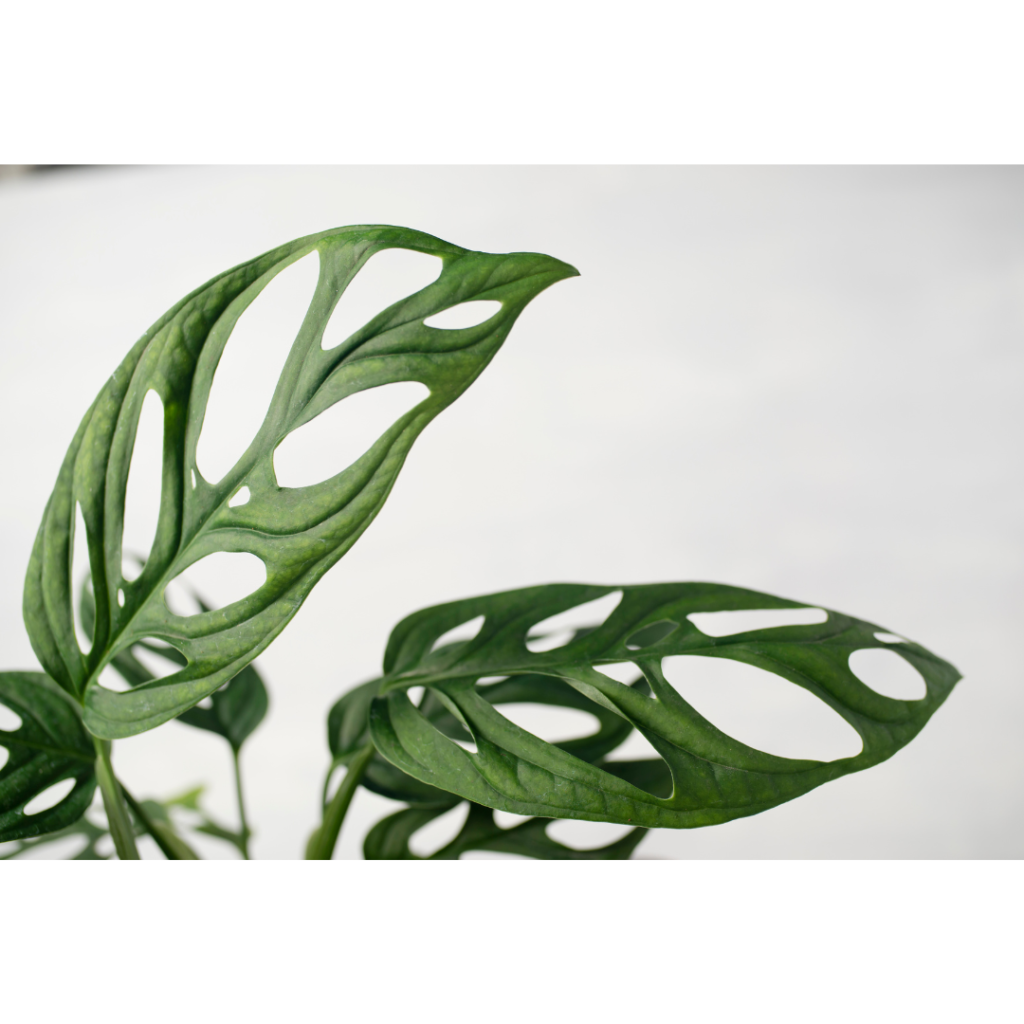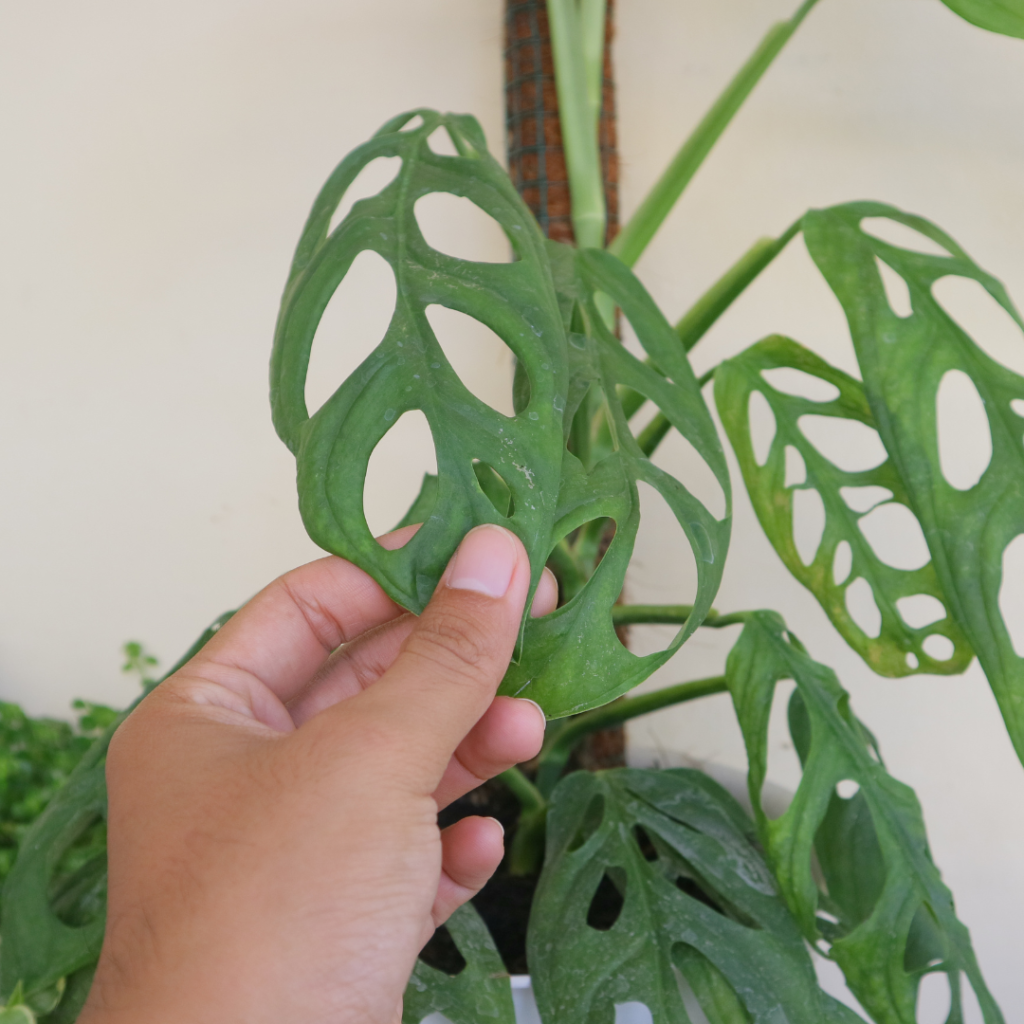Monstera Obliqua is the rarest kind of monstera plant. Obliqua grows very slowly and has large holes in the leaves.I have been a fan of Monstera plants for years. They are so beautiful, and they make my home feel like the tropics. When I found out that there was a rare kind of monstera plant, I had to get one!

The Obliqua is the rarest kind of monstera plant. It grows very slowly and has large holes in the leaves. This makes it even more unique and amazing than the other kinds of monstera plants.
If you love monstera plants like me, then you should get this one too!
Monstera adansonii and Monstera obliqua are both beautiful plants, but they’re very different.
Monstera adansonii is quite similar to Monstera obliqua. It grows to only a few meters in height, and its leaves are pierced. But the difference is that obliqua tend to have big holes in their leaves when they mature. 90% of the leaves are holes.
These plants have aerial roots and are evergreen hemiepiphytes, which means they can develop roots in the soil as well as on trees. Monsteras are a common indoor plant. To assist you with growing one, we’ll show you a sample of what this Monstera Obliqua looks like.

This plant is tricky to care for and hard to propagate that’s why it’s a rare kind of monstera plant.
Monstera require a lot of sunlight, so you will want to keep them outside if possible. You can also try growing them indoors during winter months if you live somewhere with harsh winters.
You may want to use artificial lighting or fluorescent lighting on these plants during winter months when there’s no sun available outside!
If you choose to grow this plant indoors, make sure that your room has plenty of sunlight coming in during winter months when there’s no sun available outside! You can also use artificial lighting or fluorescent lighting on these plants.
SOIL REQUIREMENT
The Obliqua is a beautiful plant that has a lot of personality. If you’re looking for a plant that can add some life to your space, the Obliqua is the perfect addition!
But what kind of soil should you use for your cheese plant? The answer is simple: pick a rich quality soil mix.
A peat-based soil mix would be the perfect soil mix for the cheese plant. This is because peat has good water retaining abilities which allow enough time for the obliqua plant to absorb enough water.
Other ingredients for your potting mix should be moss or bark and loam soil. Loam soil is a great ingredient for your mix because its loose texture allows for the plant’s roots to spread out when searching for nutrients
WATERING THE MONSTERA OBLIQUA
One of the most common mistakes that we make when caring for their Monstera Obliqua is overwatering.
This plant does not need to be watered frequently. It just has to be watered once or twice a week, especially during the summer, and once every two weeks during the winter. Only water it until the top of the soil dries off.
If the leaves of your Monstera Obliqua begin to turn brownish-yellow or get crippled, your plant is also suffering from dehydration. The darkening of leaves would be caused by waterlogging. Overwatering causes yellowed leaves, collapsed stems, and stunted development.
REQUIRED SUNLIGHT OF MONSTERA OBLIQUA
Monstera Obliqua is a beautiful plant that thrives in direct sunlight, but only for a limited amount of time. Monstera Obliqua will burn if it’s left in too much sun for too long.
Just like other varieties of monstera, obliqua enjoys bright natural light, and will thrive in bright indirect sunlight. Direct sunlight will burn the foliage and sear the fragile, thin leaves, so always keep your plant out of direct sunlight.
Monstera Obliqua is used to high humidity levels of up to 90%, as well as a deep jungle canopy to protect them from direct sunlight.
TEMPERATURE NEEDED
Monstera Obliqua is a tropical plant that needed a temperature tolerance of at least 60 degrees Farenheit. If you are growing your monstera indoors, please don’t allow the temperature to rise or decrease outside this range. Obliqua prefers temperatures between 16 to 20 degree celsius.
HUMIDITY.
Monstera Obliqua is a tropical plant so it needs a high level of humidity. If your home isn’t particularly humid, we recommend to keep your plant near the bathroom or in the kitchen. Check regularly the soil moisture, the leaves, and mist the plant if the air appears to be dry. You can also place your monstera obliqua in a room that has a humidifier.
FERTILIZING THE MONSTERA OBLIQUA
Obliqua is a slow-growing plant, which means you should fertilize it less often than other plants.
During the growing weeks, feed your Monstera with a houseplant-labeled feed every two weeks.
Fertilize it once a month using a mild fertilizer in small amounts during the spring and summer months. In the winter, however, it is advisable to let the plant rest to avoid any salt buildup in the soil, injuring the plant’s foliage and causing it to burn.
Monstera Obliqua grows slowly, and if you don’t fertilize it, it will grow even slower.
PROPAGATING THE MONSTERA OBLIQUA
Monstera Obliqua propagation is easy. This stunning plant can be propagated through stem cuttings, and it’s a great way to get more plants in your home.
Here’s what you need to know:
- Make sure you take the stem cutting during the growing seasons, from spring to the start of summer.
- Always make sure there is a leaf and nod on the cutting when you take it from the plant.
- Place the cutting in a pot filled with peat and loam compost, then water generously on top of that layer.
- In a few weeks, roots will form and the plant will slowly start growing properly—then you can pot this Monstera into fresh compost!
Take a Quiz About Monstera Plant
Click here to start the quiz.
Pingback: monstera plants - Monstera Bliss
Pingback: Monstera Dubia - Monstera Bliss